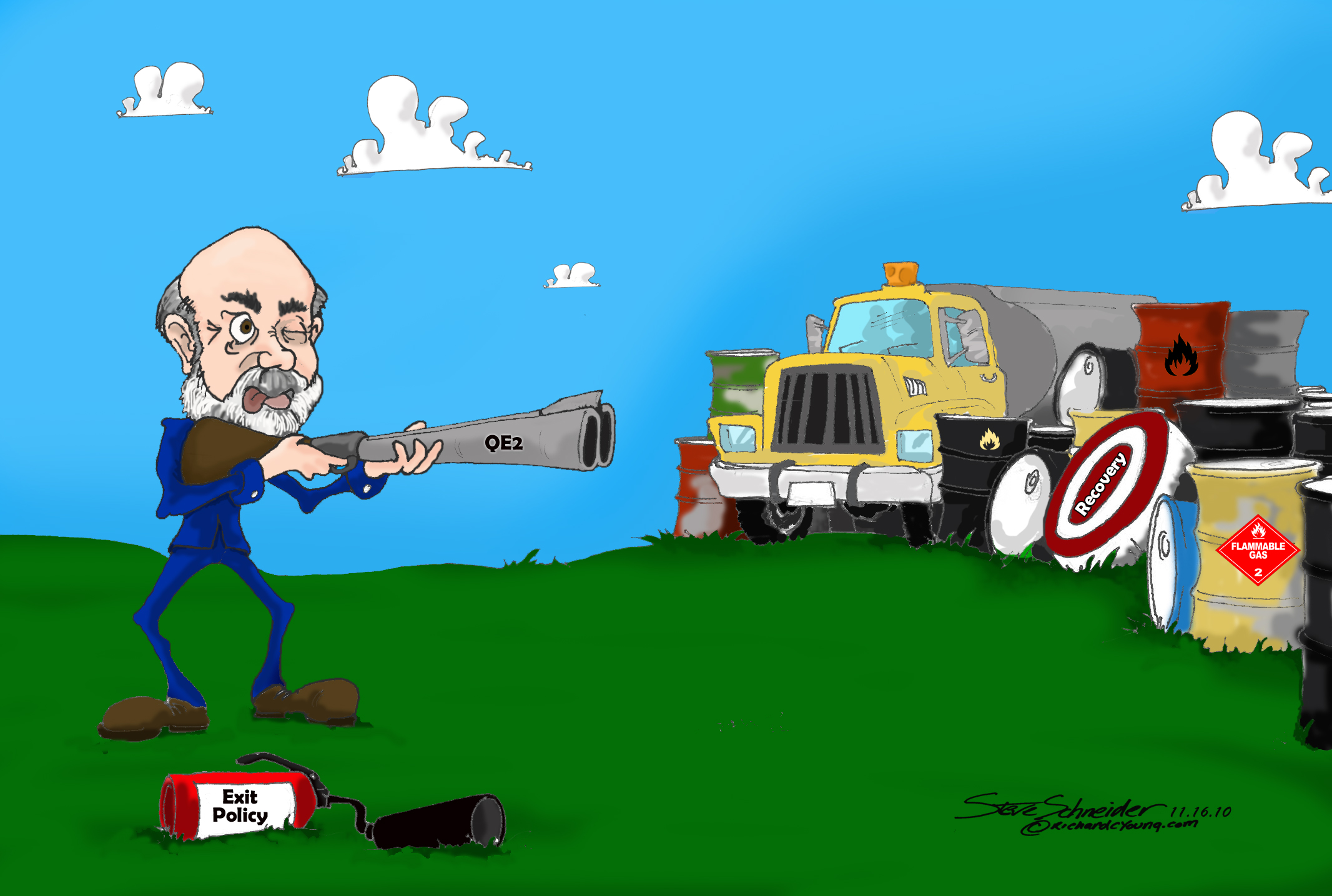I have written at length both on Youngresearch.com and in Young Research’s Global Investment Strategy about why another round of money printing by the Fed is a mistake. Not only is the Fed debasing the dollar, inflating asset prices, encouraging a misallocation of capital, punishing responsible savers, and risking much higher future inflation, but ultraloose monetary policy erodes the competitiveness of U.S. business. If a business requires a depressed U.S. dollar and zero interest rates to remain viable, it probably shouldn’t be in business to start with.
Bernanke & Co. have long pursued ultraloose monetary policy, but with this latest iteration of money printing the Fed has gone off the rails. This is cash-for-clunkers monetary policy. The Fed is inflating asset prices today at the expense of future returns. The Keynesians who dominate Fed policy today are under the mistaken belief that the Fed must do something more to stimulate growth. As if zero percent interest rates and over $1 trillion in excess banking reserves weren’t enough. The recovery has undoubtedly been below average and disappointing, but the recession was also deeper and longer than the U.S. has experienced in decades.
Milton Friedman taught us that the lags of monetary policy are long and variable. It is certainly possible that the lags from the Fed’s already ultra-accommodative monetary policy are even longer and more variable than in the past. It is also possible, and in fact likely, that uncertainty created by Washington over the last two years has greatly hindered the strength of the recovery. With a change in congressional leadership coming in January, a great deal of that uncertainty has been removed. Greater certainty could surely help strengthen the economic recovery over coming quarters. Yet the Fed does not seem to be factoring this into its decisions to further flood the banking system with high-powered money.
One would have thought that a Federal Reserve chaired by an economist who wrote his PhD thesis on uncertainty would have more appreciation for such a theory. Fortunately for the American people, a backlash is building against the Fed. Fed policy has caused or contributed to two asset-price bubbles in the last decade, and current policy is putting us on course for a third. Americans have had it with distortive monetary policy. The Fed has crossed a line. This week we saw an open letter from a group of economists and investors calling on the Fed to cease and desist its money-printing campaign. And senator Bob Corker and representative Mike Pence plan to introduce legislation to scale back the Fed by narrowing its mandate to focus solely on stable prices. Reining in the Fed is the first step to a return to sound money.

